10 September 2018
We left windy North Dakota and headed into Minnesota. The goal was to spend the night at Ann Lake campground near the Sherburne National Wildlife Refuge. We did make it to the campground, but along the way we saw a sign for the Crane Meadows National Wildlife Refuge. This refuge does not appear on our road atlas, so what a surprise. Well, since the refuge was only 5 miles off our path, we took the road less traveled, so to speak, and headed for the refuge. I’m so glad we did.
While this refuge is small – only about 2,000 acres – it borders the Platte River and has a nice riparian area with lots of oak trees. These trees were filled with migrating warblers, vireos, and resident woodpeckers. We spent about 2-3 hours birding. The first hour we didn’t make it further than ¼ mile from the trailhead. I got seven FOYs (first of years) – Tennessee Warbler, Nashville Warbler, Yellow-throated Vireo, Northern Parula, Yellow-bellied Sapsucker, Blue-Gray Gnatcatcher, and Black and White Warbler. The trees were alive with birds. Hard to track them all. And that was just first of years. We also had Black-capped Chickadee, Clay-colored Sparrow, Eastern Bluebird, Red-headed Woodpecker, Belted Kingfisher, Mallard, and Red-bellied Woodpecker (I saw this for the first time today at a rest stop earlier, along with an incessantly chattering Blue Jay). I’m sure I am missing a bird or two. I really hated to leave. The only downside of this refuge is that it is located across the road from a hog farm – STINKY.


Eastern Phoebe – Hatch Year Bird



View of the Platte River







Monarch Butterfly – they truly are one of the most beautiful butterflies in the world

Love the Milkweed when it goes to seed
The Ann Lake campground was okay, nothing special. Most of the sites weren’t level so luckily we found one that wasn’t too bad. The area surrounding our site was covered in Poison Ivy so had to be careful where we walked. We went to bed with temperatures in the 60s. A little too warm for us.
11 September 2018
A day to remember always (of course I can’t forget this day anyway as it is my parents’ anniversary).
We left the campground, which is less than 10 miles from the Sherburne National Wildlife Refuge, and headed first for the Blue Hills Trail, located on the refuge. Thought we should hike/bird before it got too hot. Temperatures have been in the 80s here lately. This trail has three loops, and we spent about 2.5 hours walking/birding the first loop only. Right off the bat, we spotted birds flitting about. They were mostly American Goldfinches, but fun to watch and observe. While checking out the birds, I saw movement in a nearby tree. Up popped a Black-billed Cuckoo. This is the last bird I expected to see on this trip. What a great surprise. Later I saw one of my favorite warblers – an Ovenbird. This bird kept chasing off an Eastern Phoebe – competition for food???


American Goldfinch – Male

Juvenile Black-billed Cuckoo

Blue Hill Trail





The grass what quite tall

This woman was walking barefoot with her dog . She must have very tough soles.

Trail included a short heavily forested segment – nice, especially since it was hot outside (but I’m not complaining – much)

I really do have a fascination with fungus and lichens
After our hike, we drove the auto tour route – 7. 3 miles. We probably saw 20 ducks total on the ponds along the drive and there were a LOT of ponds. And the only reason we saw that many was because a Bald Eagle flew over and flushed the birds. Surprisingly we saw about 50 or so Trumpeter Swans, of which only two were cygnets (hatch year birds). The drive was uneventful, although I did get to see several Palm Warblers. Also spotted on the refuge, including the drive, were several Greater Sandhill Cranes. This subspecies gets a lot taller than our Lesser Sandhill Cranes of Homer.

Trumpeter Swan with cygnet






This turtle was in the middle of the road. Thought he could hide from me by pulling his head into his shell.





That was one LARGE Bald Eagle Nest

At a viewing platform they had a mockup of an Eagle’s Nest. Quite inventive. Unfortunately you can’t see the eagle’s nest from the viewing area.

They had several interpretive panels pertaining to the Bald Eagle including “what do Eagles eat?”
Our campground for tonight is the Minneopa State Park near Mankato, Minnesota. Tomorrow we are having the passenger seat modified so it can swivel (Jack’s idea). I just hope the seat isn’t too much higher than it already is. This campground has bison. They are in an enclosure, which you can drive. We’ve decided to forego the drive as we’ve seen plenty of bison at Theodore Roosevelt National Park. Minnesota State Parks require online or telephone reservations (even for same day reservations). This isn’t a problem if we have sufficient cell phone coverage – not always the case.
12 September 2018
Today we went to DLM Distribution to have a swivel seat put into the van. In addition to that, we got our fan hooked up, our lights hooked up to an on/off switch, and an axillary battery and outlet so I can charge my laptop, plug in an electric tea kettle to heat water, or an electric blanket – so long as nothing is over 400 watts. We didn’t get out of there until after 1:00 pm, and then we had to run around Mankato to find a pharmacy to fill a new prescription for me. We hadn’t had any food since breakfast so we had a late lunch/early dinner at a mexican restaurant and headed to Whitewater River State Park (Minnesota) near the Minnesota/Wisconsin border. This is a nice area – a valley without corn or soybeans. I wish we didn’t have to leave the next day as I would definitely stay here a second night.
13 September 2018
Our mission today is to visit the Trempealeau National Wildlife Refuge located along the Mississippi River in the state of Wisconsin. I wanted to visit this refuge during our Big Adventure around the U.S. in 2013-2014, but high waters prevented us from coming as the refuge was closed. As we were crossing the bridge over the Mississippi River (upper), I commented to Jack that the water levels looked high. When we got to the refuge we found the road to the refuge headquarters closed. This is the road you need to access in order to drive the auto tour route. Lucky for us the Great River Bike Trail which crosses the refuge was open and we walked a portion of that trail (an old dirt road). We got in a total of 2.4 miles round trip. The day was sunny, warm, with little or no wind. My suntan lotion was sitting in the van, along with the bottled water I should have brought with us. But we did have the essentials – our binoculars, my camera, and the spotting scope.
One of the refuge staff stopped and asked how we were doing. This is their only access to the office building when the main road is closed. I mentioned we had tried to come here about four years ago. She laughed and said a German couple told her the same thing back at the parking lot. We later ran into the couple, and they lamented to about not being able to see the refuge beyond the trail we were both walking.
I’m glad we stopped. A Green Heron flew up out of the marsh onto a tree and we got good views of the bird. I think this is my favorite heron species in the U.S. We also saw our first Northern Cardinal of the trip. I hope to be able to come back someday and really see and enjoy this refuge.


Road closure sign


Not sure what bugs these are on the Milkweed


Philadelphia Vireo (I believe)

Pair of juvenile Cedar Waxwing


Our trail





My loving scope sherpa
Next stop – Necedah National Wildlife Refuge. This will be our third visit to this refuge, while today was our first visit to the Trempealeau refuge. Unfortunately, we got to Necedah in the heat of the day (temperature around 82 degrees F). We did see some songbirds, but it was pretty quiet. Except for Crane Meadows NWR, we really haven’t seen many warblers. And in Minnesota and Wisconsin we really haven’t seen many ducks either.
One thing Necedah NWR is known for are Whooping Cranes and we got to see a pair. This pair had a young one, but it stayed mostly hidden in the grasses while the parents performed their elaborate dance (think Sandhill Cranes). And speaking of which, we did see a pair of Greater Sandhill Cranes at the refuge near to where we spotted the Whooping Cranes.

One of the “old” signs

Crane Art at the Refuge Headquarters – are they Whooping or Sandhill or does it matter?

Yikes!!! I’m glad that nest is hanging high up in a tree. It was BIG.

This White-breasted Nuthatch flew into a tree and proceeded to clean its bill on the tree branch …






Mourning Dove

Rose-breasted Grosbeak – hatch year bird





Goose Pond where we saw the most birds, and the Whooping Crane family – Go Whoopers!!!


Prior to arriving at Necedah NWR, we stopped at the Wegner Grotto Country Park. This park was started in 1929 after Paul and Matilda Wegner retired. They worked on the grotto until 1936. Very impressive. The property was purchased in 1986 by the Kohler Foundation, Inc., at which time restoration began on the grotto. In 1987, the restoration was completed and the property was gifted to the county (Monroe) for use as a “historic grassroots art site”.



A small nondenominational church where there were over 40 weddings and one funeral. The funeral was for Paul Wegner.







Replica of Paul and Matilda’s 50th Wedding Anniversary Cake

Tonight we are staying at the Black River Falls State Forest campground. This is the most expensive campground to date. When you have to pay the day use fee and camping fees as an “out-of-stater” the prices can add up. And we didn’t even have an electric site, which costs more. Tomorrow we head to Land O’ Lakes to visit friends for a couple of days and then head on into Michigan.
14 September 2018
The parking area near the campground loop where the showers and bathrooms were located was hopping with birds this morning – Blue Jays, Black and White Warblers, Rose-breasted Grosbeaks, Clay-colored Sparrows, Yellow-breasted Sapsucker, yellowish warblers I couldn’t identify as they moved too quickly through the trees, and I could hear at least six different Red-breasted Nuthatch (and saw four at one time). One warbler was following a pine needle that was falling to the ground, and the warbler was trying to catch it as it fell. Fun to watch.
We drove the back roads to Land O’ Lakes where we plan to visit friends Cass and Norm for a couple of days. Jack went to college with Cass. Along the way we saw a lot of the red maples in blazing, flaming reds. Beautiful. Such a vivid color of red. And, the sugar maples coming on strong with their complimentary orange colors. Land O’ Lakes in on the northern border with Michigan.
There were a lot of motorcyclists on the roads today. We think we saw several hundred bikes during our 200-mile trip. We later learned there is a motorcycle event in Tomahawk, Wisconsin that draws over 40,000 motorcyclists and other enthusiasts each year. The event is a fundraiser for Muscular Dystrophy. We saw signs too that read Bikers’ Fall Tavern Tour. Oh goody, motorcyclists that have been traveling to bars throughout the day. Hopefully it is to meet each other out in the parking lot, but not to go from bar/tavern to bar/tavern to drink.

Palm Warbler at the playground

Palm Warbler
At Land O’ Lakes we went to a monthly event at the community garden that involved appetizers and BYOB (Bring Your Own Beverage). Met some really nice people, several who have even visited Homer. We then had dinner at the Redman Restaurant. Great food. I had the walleye (fish). A first for me. On the way to the restaurant there was a Pileated Woodpecker alongside the road, and it even stayed awhile as we backed up the car to get a better view (and some photos) of the bird. Hard to miss that big woodpecker.

More Palm Warblers – about five flitting about at our friends’ yard

Pileated Woodpecker
15 September 2018
Today was a lazy day with friends. We walked the dog (Sonya – golden retriever, 13 years old) and went for a pontoon boat ride on several of the “chain” lakes around Land O’ Lakes. The town has that name for a reason. If you looked at a map you would be surprised at just how many lakes there are in the vicinity. Also, if you play the golf course here you can claim to have played one round of golf in two states – Wisconsin and Michigan. The boat ride was fun and relaxing. I had a great time. We saw a number of loons, including several hatch year birds. Amazing how “gray” they are, despite being almost full size. And they were still depending upon their parents to feed them – refusing to dive as we boated by.

Interesting moth

Road kill – dead frog




Thousand Lake



Common Loon


Juvenile Common Loon – all gray



One hot Bald Eagle – cooling off


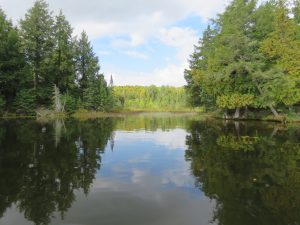


Mallards preening



Maples turning colors – beautiful
We were later joined by friends of friends – Kathy and George. They live in Idaho and came in their new camping trailer. That trailer is nice. We met Kathy and George when they visited our home last summer (2017) with our friends Cass and Norm. Kathy is a weaver like Cass and will join Cass for a trip to collect mushrooms for use in dying wool – huh? I am curious as to what mushrooms produce what colors. We had an enjoyable evening with lots of lively discussion – politics wasn’t even involved.
16 September 2018
Time to say goodbye to our friends, thank them for a wonderful time, and head into Michigan and continue our trek to the northeast coast. The days have been warm and humid. Not something I am used to and it can really drag one’s energy level down. After a false start (left Jack’s ditty bag at Land O’ Lakes and had to go back to retrieve it), we finally made our way to Pictured Rocks National Lakeshore along Lake Superior near Marquette, Michigan. We stopped at the visitor center to get a map and then had to drive almost 40 miles to our campsite. We camped for the night at Hurricane River (lower campground loop); a nice little campground. And we had ready access to the beach, which was nice. The breeze off the lake made for a pleasant evening. Near the bathroom there were flowers full of Monarch Butterflies busily eating away. They are beginning their migration south to Mexico. The one’s we saw today won’t actually make it to Mexico, but their offspring will. To learn more about the life history of the monarch butterfly go to: https://www.nwf.org/Educational-Resources/Wildlife-Guide/Invertebrates/Monarch-Butterfly. It’s quite fascinating.



Our Camper Van – the ‘tin tent’

Monarch Butterflies feeding





Lake Superior – Pictured Rocks National Lakeshore

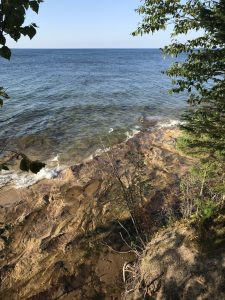

North Country Trail (near our campground)

Jack

Selfie – Jack and I

17 September 2018
Today we explored the national lakeshore. Our first adventure for the day was a walk from our campground to the Au Sable Lighthouse along the North Country Trail – a 4,000+ mile trail from ND to NY. We hiked only a short segment of the trail – 1.5 miles one way. Since this is a national park, dogs aren’t allowed on trails, nor can people bring guns. So you can imagine our surprise when we saw two young men with long rifles and a hound dog each, walking along the trail. They passed us and went along for a short distance before merging into the woods. We heard several dogs and believe they probably treed some animal, although we never found out what was going on. We later did hear a single shot. I was going to ask at the visitor center when we went later, but then I forgot. Age-related forgetfulness, I suspect. Darn, I so wanted to know what was happening.
In addition to the dogs on the trail, we were rewarded with a Black-throated Green Warbler in breeding plumage, an American Redstart male, and several Palm Warblers. The Palm Warblers bob their tail so generally easy to identify. Later when we were on the road that goes through the park, we saw two (lesser) Sandhill Cranes right alongside the road. I hope they don’t get too close to the cars.

Steps to the beach



This Eastern Chipmunk was within five feet of me

Eastern Chipmunk

Black-throated Green Warbler



Au Sable Lighthouse
After our walk we drove to the Bear Trap restaurant, which is on the way to our other destinations within the lakeshore boundaries. This restaurant had a sign for homemade pasties. Pasties are similar to calzone, but they are a Norwegian dish – primarily meat and potatoes in a pastry shell. They were easy for workers to take to their work site. We had pasties as a kid – my grandmother was Norwegian. In the town of Munising, they had sign for beef, chicken, veggie, and jalapeno pasties. So I thought this popular restaurant would have a variety of pasties as well. No such luck. They only had beef pasties and I haven’t had beef (knowingly) since 1984 and I wasn’t going to start just so I could eat pasties.
After lunch we went to Miner’s Caste to check out the “pictured rocks”. You can see a very small segment of the rock cliff faces, but if you really want to see the “pictured rocks” then take a boat trip out of Munising. We also visited Miner’s Falls, Munising Falls, and Sand Point Marsh Boardwalk. Not much happening birdwise at any of these locations, although I did see a Swamp Sparrow (one of my top three favorite sparrow species) along the Sand Point Marsh boardwalk.
Miner’s Castle and Falls

Miner’s Castle rock formation

About the only view of the colorful cliffs we got to see. I think the best views would be from a guided boat trip.

Miner’s Falls trail







Eastern Chipmunk


Steps down to a view of Miner’s Falls

Miner’s Fall

This looked like a face to me
Munising Falls

Sand Point Marsh Boardwalk




Tonight we are staying at the Fox River State Forest campground about five miles northwest of Seney, Michigan. The Seney National Wildlife Refuge is about nine miles from town, so that will be our destination in the morning. We are about one-day behind schedule, but that just means one less day in Canada. We should get there on the 20th of September.
18 September 2018
Seney National Wildlife Refuge is a hop, skip, and a jump from our campground. We’ve visited this refuge twice in the past and didn’t know there were several campgrounds so close to the refuge. Let’s just say they aren’t shown on the road atlas we’ve been using. Pays to get state maps, I guess. Next time we will know.
We were surprised by the number of cars at the refuge when we arrived around 9:15 am – at least ten. At so many refuges there are rarely any visitors. And later a school bus arrived with kids from a nearby elementary school and lots of parents to help chaperone the kids. The refuge has a Nature Learning Center – no kids left indoors.
We walked the 1.5-mile nature trail near the visitor center. Some bird activity, although not much. We did see five very cooperative Wood Ducks in the pond adjacent to the refuge. This is the place to visit if you want to see Wood Ducks. I think between the nature trail and the auto route drive (seven miles long) we must have seen 20 or so Wood Ducks. Of course some of these could be the same ducks we had seen earlier since we all know birds can fly. But still, great to see so many out in the open (on the various ponds or “pools” as the refuge likes to call them).
On the auto tour route, we saw at least (bare minimum) 50 Trumpeter Swans. Surprisingly though we didn’t see any cygnets. We watched the swans dip into the pools to feed, with their back ends sticking straight up in the air and their feet moving to, I assume, help them balance while partially under water. When they righted themselves, they then shuffled their feet to help stir up the bed of the pool, again I assume, to loosen vegetation on which to feed.


Like how old signs were repurposed


Great Blue Heron

Beaver activity

Yellow-bellied Sapsucker


Nature Trail






Trumpeter Swan






Common Loon

Common Loon – hatch year bird

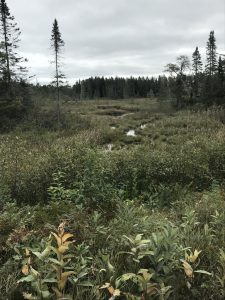

Swainson’s Thrush


Just outside of the refuge the electrical transmission right-of-way consists of railroad ties. Not sure why they are placed there.
After visiting the refuge, we headed north to visit the Seney NWR Whitefish Point Unit, located aptly at Whitefish Point on Lake Superior. There is a bird observatory at this location. We didn’t “observe” a lot of birds here. The place was busy because adjacent to this small unit (less than 75 acres) is the Whitefish Lighthouse and Shipwreck Museum. So for all you who were alive in mid 70s, Gordon Lightfoot wrote and sung a song called “The Wreck of the Edmund Fitzgerald”. Well there actually was such a shipwreck near Lighthouse Point in 1975. The S.S. Edmund Fitzgerald and its 29 crew members disappeared (the ship sunk) during a severe November gale storm. No one really knows what caused the sinking. There have been a number of theories, including – yes aliens. Well Canadians do reside on the other side of the lake. Okay I can hear you all groaning.

Boardwalk at Whitefish Point Unit – Seney NWR


Canada Goose

Red-breasted Nuthatch

Black-capped Chickadee – there were a lot of chickadees and some came within five feet or so.



Whitefish Point Lighthouse
We are staying the night at the Monocle Lake Campground (U.S. Forest Service). A nice campground with a lot of level sites (we like level sites), and some of the cleanest campground vault toilet bathrooms I’ve yet to encounter. I would definitely come back to this campground.

Tomorrow, after we get the oil changed in our vehicle (we’ve now gone 5,00 miles on this trip), we cross over into Canada for about ten days or so. Our goal is New Brunswick, Prince Edwards Island, and Nova Scotia then on to Maine. Until then …












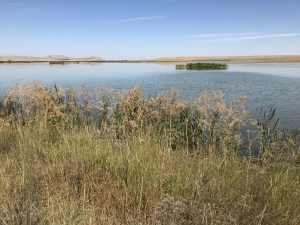





















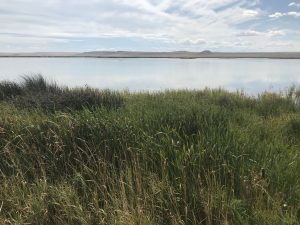














































































































































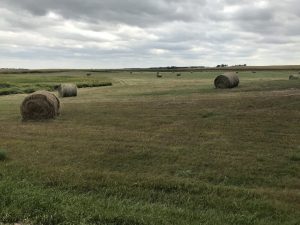












 26 August 2018
26 August 2018




































































































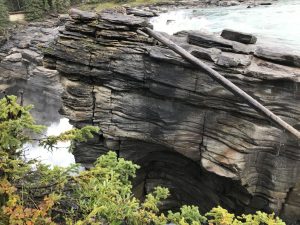




















Recent Comments